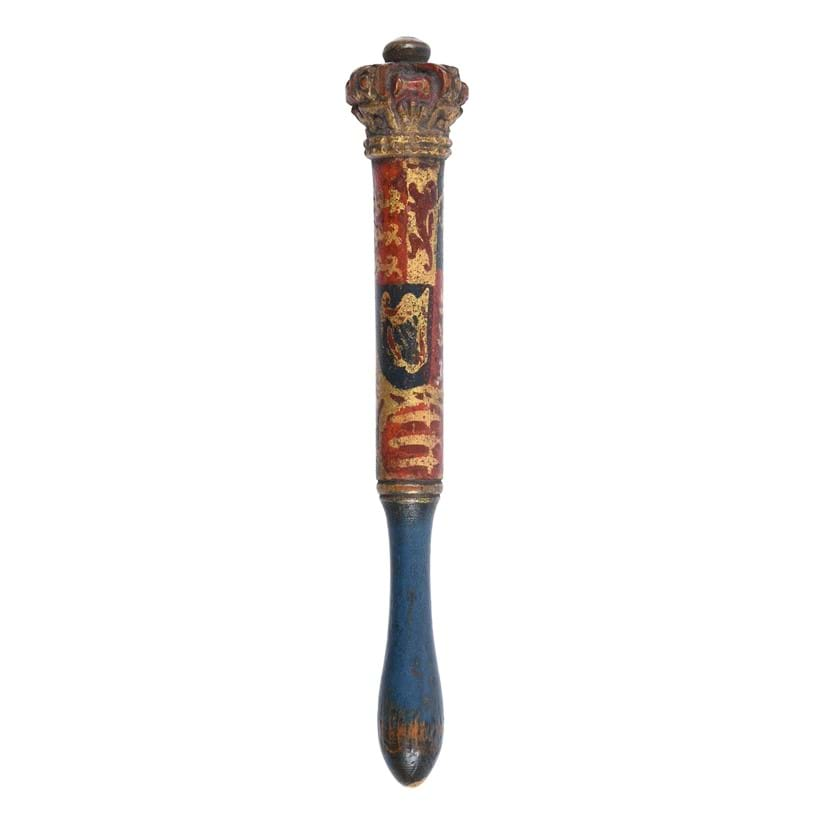Unique Objects for the Home | Interiors | 17 October 2023
Our forthcoming October Interiors sale features nearly 280 lots, dating from the late 17th century through to the modern day and post-war design. Offering rugs & carpets, furniture, lighting, Decorative Arts since 1860, as well as a private collection of truncheons and tipstaves, here Head of Sale, Ashley Matthews, takes a look at some of the highlights.
A Regency Cylinder Bureau Bookcase
Amongst the offering of furniture is Lot 160, a Regency mahogany, rosewood, and calamander cylinder bureau bookcase. Standing at 162cm high and 85cm wide, this is of nice proportion for any room, be it a working office or a drawing room, as it wouldn’t dominate the interior, but would add a touch of class.
Featuring attractive veneers and timbers, the superstructure, with open shelves and a brass gallery, stands above the cylinder action fall which encloses an arrangement of satinwood fronted drawers, pigeonholes and compartments above the leather inset writing surface. The whole is stood on reeded tapering legs with an undertier and are very reminiscent of the work of Gillows of Lancaster & London. It is estimated at £1,200-1,800 (+ fees).
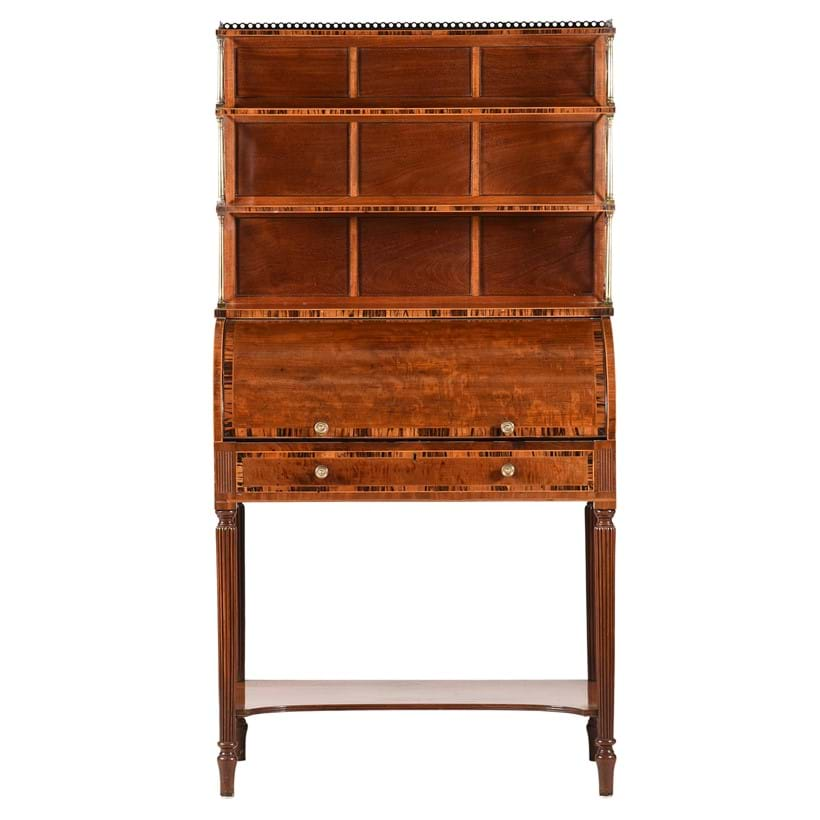
A Lines Brothers 'Sportyboy' rocking horse
For the children’s nursery, we have Lot 146, a Lines Brother’s ‘Sportyboy’ rocking horse. This probably dates from the mid-20th century, but appears to have had some restorations and refreshment overall. Named ‘Bracken’ this chestnut horse with natural mane and tail is fitted with reigns, a saddle and stirrups and stands on its rocker base. It is a smaller size than often found at only 85cm high and 91cm long, and so is probably best suited to the youngest budding equestrian in the family!
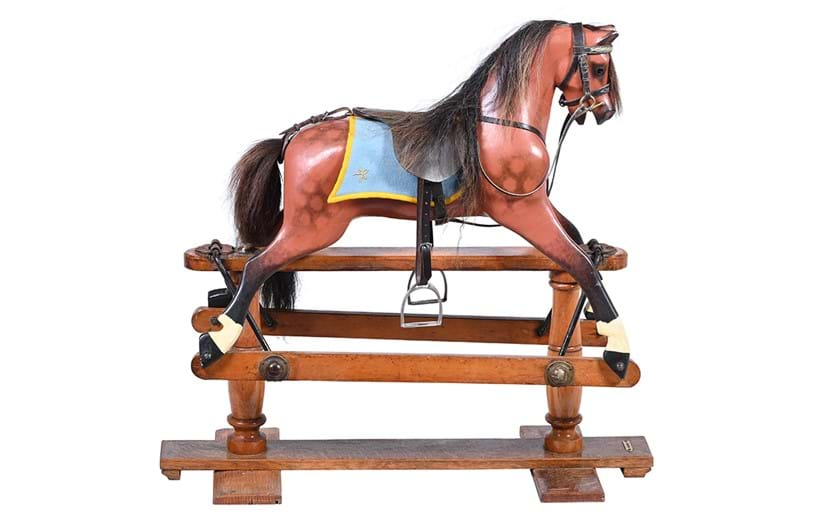
A lustre vase by Gordon Forsyth R.I. (1879-1952) for Pilkington's 'Royal Lancastrian' pottery
Towards the end of the sale we have a selection of Decorative Arts and Modern Design. This section includes Lot 199, a Pilkington’s Royal Lancastrian pottery vase. Dating from the first quarter of the 20th century, it bears a striking design featuring a fashionable lady seated upon a horse, possibly a depiction of the ‘Fine Lady’ of Banbury Cross fame. The neck features Gothic script text that is tantalisingly difficult to make out, which again may indicate the subject or original owner. It was designed and decorated by Gordon Forsyth R.I., with the underside of the vase featuring his painted marks and cypher alongside the factory impressed marks. Evidently a fan of the pun, Forsyth’s cypher mark is, rather appropriately, made up of four (entwined) scythes.
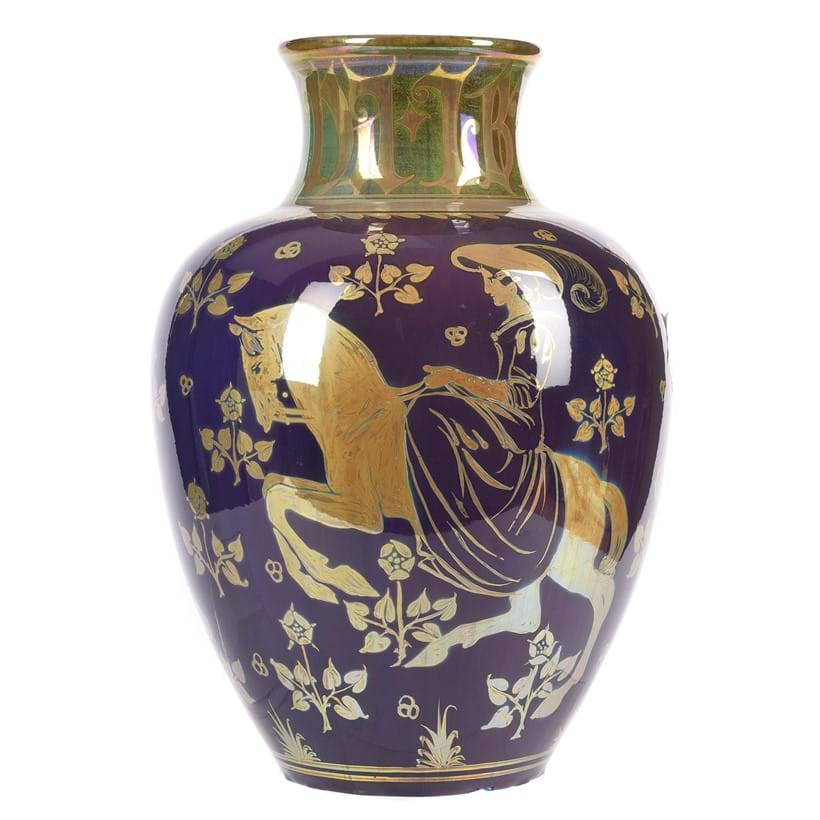
Born in Fraserburgh, Gordon Mitchell Forsyth, moved to Stoke-on-Trent in 1903 and became art director at the tileworks of Minton Hollins & Co. Three years later he moved to the same position at Pilkington’s Tile and Pottery Company near Manchester. He returned here after his service in the First World War. Following this he took up teaching and was the tutor of a number of notable students including Susie Cooper, Clarice Cliff, and Charlotte Rhead. The role he played in British ceramic design has lead him to be called ‘the magus of the mid-20th century pottery industry’. Examples of his work can be seen in the Victoria & Albert (V&A) Museum, London.
A group of silvered bronze models of figures by Josef Lorenzl (1892-1950).
Also included in this section of Decorative Art and Modern Design, are a collection of Art Deco bronzes from a private collection. The selection includes a group of silvered bronze models of figures by Josef Lorenzl (1892-1950).
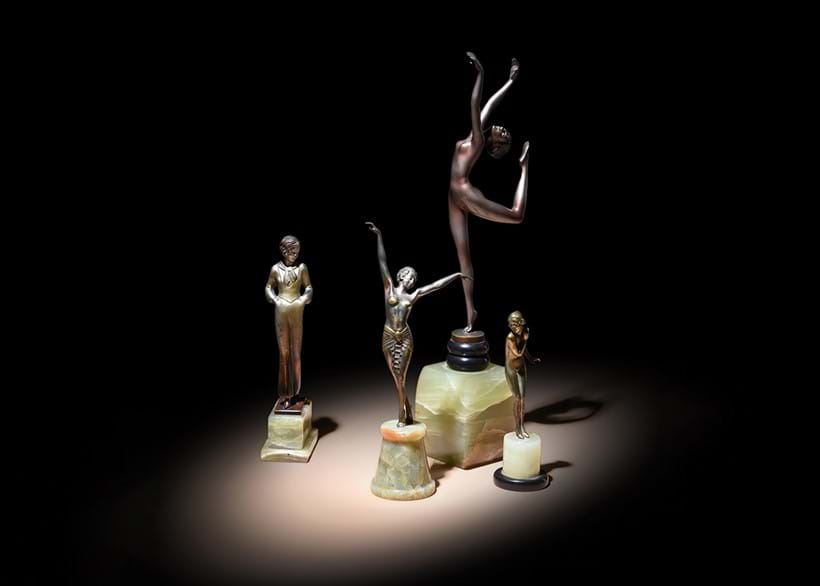
Lorenzl was an Austrian sculptor and ceramicist during the Art Deco period, and is a direct contemporary of such luminaries as Ferdinand Preiss and Demetre Chiparus who also worked in cold painted bronze and chryselephantine. Lorenzl was evidently captivated by the sinuous female form and is best remembered for his models of shapely girls, often dancers, with long elegant legs and often closed eyes. Another common feature of his works is their presentation on Brazilian green onyx bases.
He is known to have used many signatures on his work ranging from Lorenzl, through many permutations including R. Lor. Some of the pieces in this collection are signed as such.
Lorenzl is known to have produced his models in a variety of sizes to suit his clientele ranging from around 5-30 inches in size. The selection here includes smaller models as well as the larger and more striking examples. Alongside his output in bronze he is also known to have been a designer of figures for the Austrian firm of Goldschneider.
A Collection of Truncheons and Tipstaves
The sale concludes with a collection of Truncheons and Tipstaves. These sometimes highly decorative objects, served the dual purpose of being a ‘badge of office’ akin to the modern day warrant card, as well as a tool for keeping the peace. One of the most highly decorated items in this sale is Lot 241. This George III example is only 17cm long, but features a detailed Royal coat of arms above three gold Seaxes. These Seaxes (Saxon short swords) feature in both the coats of arms for Essex and Middlesex and may well suggest a (modern) ‘London’ provenance. It is interesting to note that the Seaxes appear backwards, but these were usually depicted facing the opposite direction. This could well be an error by the decorator who was perhaps working from memory or an incorrect reversed design.
Auction Details
Tuesday 17 October | 10.30am BST
Donnington Priory, Newbury, Berkshire RG14 2JE
Browse the auction
Sign up to email alerts
VIEWING:
Viewing in Newbury:
- Sunday 15 October: 10am-3pm
- Monday 16 October: 10am-4pm
- Tuesday 17 October: 8.30am-4pm











